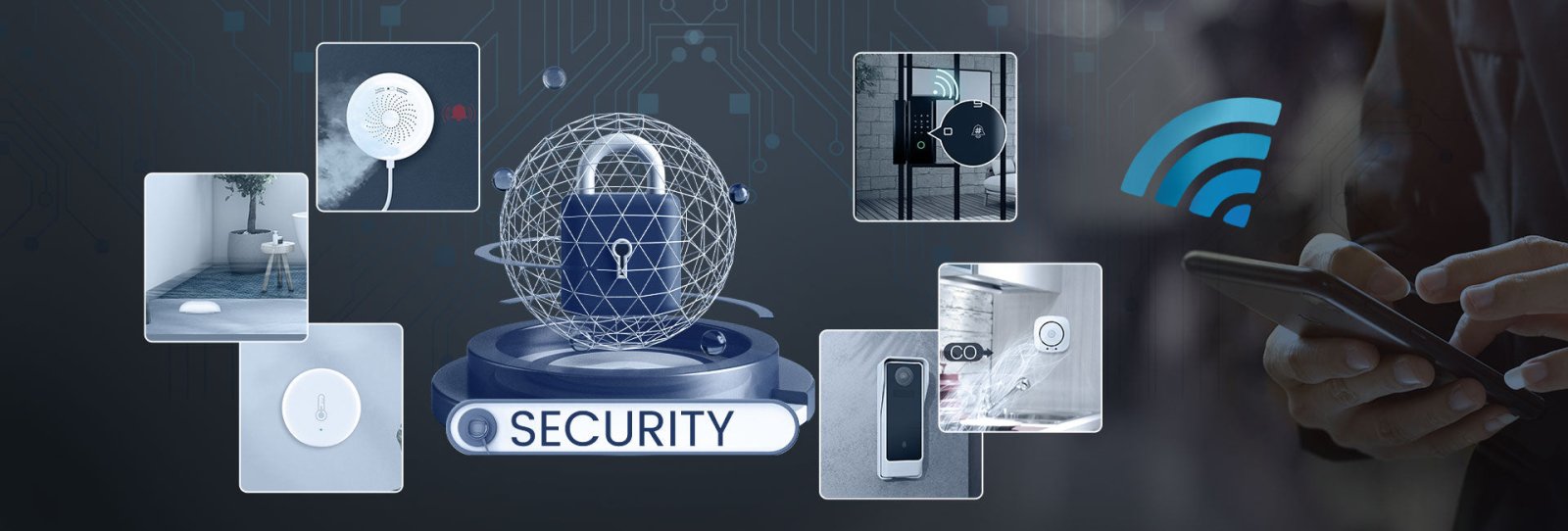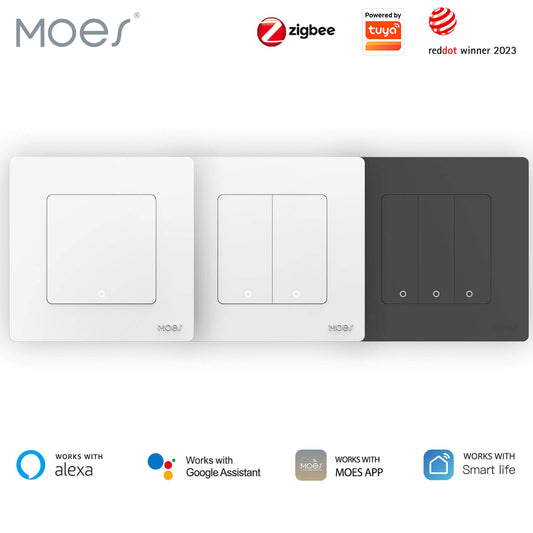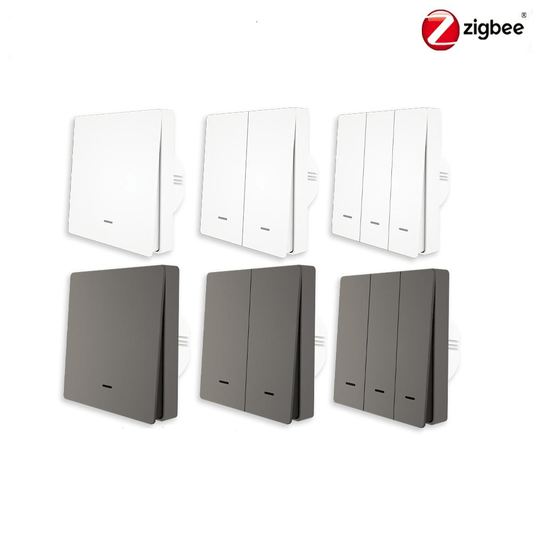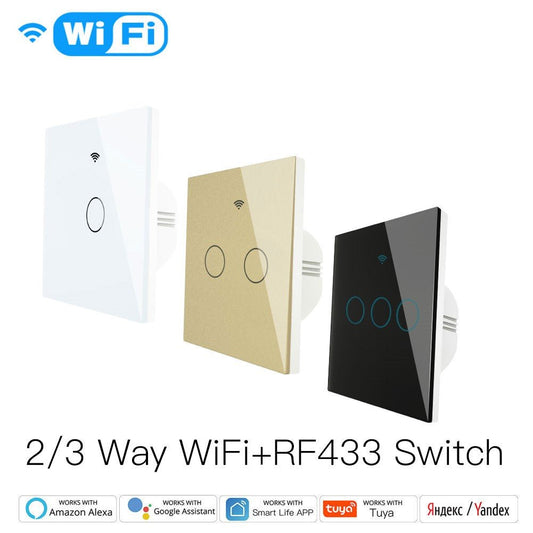Did you know that homes lacking a security system are three times more vulnerable to burglary compared to the average home? Despite your commendable efforts to fortify your residence, the persistent threat of unintentional intrusion remains palpable in the absence of substantial and effective security solutions.
It's undeniable that straightforward yet potent DIY home security measures offer an ideal strategy to safeguard our cherished homes and valued possessions. Incorporating smart locks, sensors, and security cameras enhances the ease of remotely monitoring your home's security, allowing you to simulate a presence even when you're away for an additional layer of comprehensive protection.

Why You Should Create A Home Security System
When pondering a substantial investment, it's prudent to approach the decision with careful consideration and rational analysis. Home security systems, packed with various features and benefits, are essential for preventing crimes such as burglaries and thefts.
Going beyond mere prevention, these systems empower you to trace suspicious activities through alarms and playback video footage. If you're still wavering on the importance of a security system for your home, a second look may be warranted, considering the following compelling points:

Immediate Intruder Detection: Swiftly identifying any unauthorized entry, the system triggers an alarm that promptly notifies both you and local law enforcement units, ensuring effective protection for you, your family, and your property.
Dissuading Potential Intruders: Research data underscores that homes equipped with security systems are less prone to criminal targeting, serving as a deterrent to potential wrongdoers.
Insurance Cost Reduction: The installation of a security system may lead to a reduction in property insurance premiums, delivering financial benefits to homeowners.
Remote Home Management: Even when you're abroad, a security system allows you to remotely manage your home – from adjusting the thermostat to turning on lights – enhancing convenience and control.
Increased Property Value: Investing in a security system not only safeguards your home but also contributes to an uptick in its asset value and market price when the time comes to sell.
Best of all, you can enjoy all the above benefits without having to bear heavy financial pressure. Especially if you choose a DIY security system, you can save costs and configure flexibility more intuitively.
What is a DIY Home Security System?
DIY home security systems enable homeowners to install, configure, and manage their own security devices independently. Unlike traditional systems, which require professional installation and monitoring, DIY systems give consumers control. This allows you to customise the system to meet your specific needs, budget, and preferences without relying on third-party services.
Components of a Security System
A typical DIY home security system consists of several core components, each designed to perform specific functions that enhance the security of your home. These components are often wireless and can be managed remotely via apps or other connected devices.
Common elements include:
Security Cameras: Capture real-time video of your property, providing surveillance both indoors and outdoors. Cameras can be motion-activated and provide cloud or local storage options.
Motion Detectors: Detect movement within a designated area and trigger alarms or notifications if movement is detected. These detectors often use infrared, microwave, or ultrasonic technology to sense disturbances.
Door/Window Sensors: Installed on doors and windows, these sensors detect when they are opened or closed, alerting you to potential unauthorised entry.
Smart Home Devices: Devices such as smart lights, smart locks, and smart plugs that integrate with your security system, allowing for automation and remote control.
Remote Monitoring & Notifications: Allow users to monitor their home security remotely via smartphones or computers. Notifications are sent in real-time through SMS, email, or push alerts, ensuring you are always informed.

How Does a DIY Home Security System Work?
A DIY home security system combines different devices like motion detectors, door/window sensors, and cameras to keep an eye on your home. These sensors are placed around your house to watch for things like movement or open doors and windows. When something unusual happens, the sensors send a signal to the system, which then alerts you through an app on your phone.
You can control and manage your system remotely using your phone or computer. This lets you arm or disarm the system, check the cameras, and see the status of your sensors from anywhere.
DIY vs. Professionally Installed Home Security Systems
DIY Security Systems
If you're looking to save on installation fees and avoid expensive subscriptions, DIY security systems are an ideal choice. With MOES DIY security setups, you can customize your system to match your specific needs and budget. Most of our systems come as easy-to-install kits, allowing you to configure them at your convenience. As your security needs evolve, you can add additional sensors or devices to your system in just a few minutes.
- Cost Savings: DIY systems eliminate installation costs and expensive monitoring subscriptions.
- Easy Installation: MOES offers hassle-free installation with no need for professional assistance.
- Customizable and Scalable: As your needs change, simply add more devices like cameras, sensors, or locks to enhance your system.
- No Long-Term Commitments: You control the system without being locked into lengthy contracts or paying hefty cancellation fees.

The Flexibility of DIY with MOES
For budget-conscious consumers, MOES DIY systems offer the flexibility to choose only what you need. A basic DIY system from MOES can cover essential areas, with wireless protocols and add-on components like door/window sensors, cameras, and motion detectors. For more comprehensive protection, you can upgrade to advanced systems that support multiple protocols (such as Zigbee, Wi-Fi, and Matter), and integrate more devices for a tailored experience.
Unlike traditional systems, which typically require professional monitoring, MOES DIY systems offer the option of self-monitoring. You'll still receive alerts when sensors are triggered, and you have full control over contacting local authorities if needed. However, MOES also provides the option to subscribe to professional monitoring services for added peace of mind.
Professionally Installed Systems
Professionally installed systems, though more expensive, often come with the convenience of 24/7 monitoring and professional setup. These systems typically require a multi-year contract and include additional costs for professional installation. They support a wide range of components such as motion detectors, cameras, and door locks, but you will likely pay more for the convenience of having everything set up for you.
With professional monitoring, when an alarm is triggered, an agent will first attempt to contact you. If you don’t respond, they’ll notify the authorities. While these systems often include touch-screen hubs with a variety of components, they may require a permit for installation, depending on your area.
Comparison of DIY Home Security Systems vs. Professionally Installed Systems
| Feature | DIY Home Security (MOES) | Professionally Installed Systems |
| Cost | More affordable, no installation or long-term monitoring fees | Higher upfront cost, plus ongoing professional monitoring fees |
| Installation | Easy to install by yourself, no need for professionals | Requires professional installation, can be expensive |
| Customizability | Highly customizable, choose components as needed | Limited customization options, fixed components |
| Scalability | Can easily add or upgrade components as needed | Usually fixed, but may allow limited upgrades |
| Contracts | No long-term contracts, freedom to change services or cancel | Often requires multi-year contracts with cancellation fees |
| Monitoring | Self-monitoring or optional professional monitoring | 24/7 professional monitoring included |
| Control | Full control via mobile app or web portal | Control via professional monitoring center, with less flexibility |
| Flexibility | Flexible, can adjust as needed for changing security needs | Less flexible due to contract restrictions |
| Voice Control Integration | Fully compatible with Alexa, Google Assistant, and IFTTT | May offer some voice control but less customizable |
| Technical Knowledge | Requires basic technical knowledge for installation | No technical knowledge required for setup |
How to Choose the Right DIY Security System
When selecting the right DIY home security system for your home, consider these factors:

1. Identify Your Priorities
What are the most important features to you? Is it surveillance cameras, motion sensors, or smart locks? Prioritize your needs and choose components that fit your lifestyle.
2. Consider Weather Conditions
If you live in a region with extreme weather, ensure that the equipment you choose can withstand those conditions. Outdoor cameras and sensors should be weatherproof to ensure reliability.
3. Look for Both Wi-Fi and Wired Connectivity
Consider systems that offer both Wi-Fi and wired options. While Wi-Fi offers flexibility, wired systems can provide more stable connectivity, especially in areas with poor internet reception.
4. Account for Your Home's Size and Layout
The larger your home, the more sensors and cameras you will need. Make sure to take into account how many rooms, windows, and doors you want to cover for a comprehensive security solution.
5. Choose Between a Kit or Individual Components
Some people prefer the convenience of purchasing a full DIY kit, while others prefer selecting individual components for more customization. Kits offer an all-in-one solution, while buying components individually allows you to handpick the devices that meet your specific needs.
Additional Tips for Setting Up Your DIY Home Security System
Smart Automation: Integrating your DIY system with smart home devices like smart lights or smart plugs can help automate your home security, making it more efficient and user-friendly.
User Accessibility: Ensure that the system is easy to use, especially for all household members. Many DIY systems offer intuitive apps or interfaces, making it simple to control your home’s security from anywhere.
System Updates: Keep your system updated with the latest software to ensure that it functions optimally and remains secure against vulnerabilities.
Privacy Protection: Ensure that your system is equipped with encryption features to protect your data and maintain your privacy.
The Best MOES Components for DIY Home Security Systems
MOES offers a range of high-quality components for DIY home security systems, ensuring you can build a safe, reliable, efficient and intelligent system.
Camera
 |
MOES indoor security camera Stay one step ahead with the Tuya PTZ WiFi IP Camera, a cutting-edge device designed to elevate your indoor security experience. This smart camera boasts an array of advanced features, including automatic tracking, 1080P resolution, and AI human detection, ensuring that your space is monitored with unparalleled precision and intelligence. |
 |
MOES outdoor security camera Experience the epitome of outdoor security with the MOES WiFi Smart Outdoor Camera, a robust surveillance solution designed to deliver unparalleled protection. Boasting a crisp 3MP HD resolution, advanced sound and motion detection, vivid color night vision, and two-way audio communication, this camera is your ultimate security monitor. |
Door and window sensor
 |
With just a simple addition of the ZigBee hub to the Smart Life/Tuya App, you can effortlessly connect and manage your door and window sensors. These door alarm sensors will promptly send notifications whenever they detect any external objects or animals, ensuring the safety of your home at all times. By keeping the sensor connected to the ZigBee hub, you can safeguard every corner of your house, whether it's your bedroom, garage, bathroom, garden or any other area you desire. |
Smart Home Devices
 |
The WiFi Smart Power Wall Socket with USB 2 Plug Outlets for your electrical needs. The maximum current of 16A AC240V ensures safe and reliable performance. In addition to the plug outlets, this socket also features a USB output of 5V/2.1A, allowing you to charge your devices without the need for additional adapters or plugs. Experience the convenience and versatility of this WiFi socket and simplify your electrical setup today! |
 |
Introducing the MOES wifi smart light, the ultimate WiFi smart light for your home. This dimmable round-coloured spotlight fixture is not only visually appealing but also functional. With a wattage of 7W, this LED bulb emits the perfect amount of light to create the ideal ambience in any room. MOES WiFi Smart LED Downlights are compatible with popular voice control platforms like Alexa and Google Home, allowing you to easily control the lighting in your home with just your voice. Just connect it to your Wi-Fi network and start enjoying the convenience of smart lighting. |
 |
Experience cutting-edge security with our Smart Facial Recognition Door Lock featuring 3D facial recognition technology, a high-definition 1MP camera, semiconductor fingerprint recognition, anti-theft alarm, and compatibility with the 6068 standard lock body. |
Optimizing Your DIY Home Security System
Optimizing your DIY home security system is a crucial step to ensure its optimal performance and effectiveness.
Here are methods to enhance your DIY home security system:
Strategically Place Cameras
According to FBI crime reports, burglars primarily target three entry points. Position your cameras strategically to clearly capture each location:
- Front door
- Back and side doors
- Windows facing away from the street
Place cameras out of easy reach to prevent burglars from tampering with them. For example, if you have a two-story house, consider installing the front door camera on the second floor. Also, be mindful of objects near the cameras, preventing thieves from easily grabbing items and throwing them at the cameras.

Provide Adequate Lighting for Night Monitoring
Regardless of where you place home security cameras, ensure there's sufficient lighting for clear footage in the dark. Many modern security cameras come equipped with night vision technology, allowing them to capture suspicious activities in low-light conditions.
Utilize Mobile Applications
Most home security systems operate through mobile applications. With a simple tap or swipe, you can check the status of your home, receive notifications, and view camera feeds from your smartphone, tablet, or laptop.
Features like smart adjustments enable you to personalize camera settings based on your needs and preferences through the mobile app. Many cameras include sensitive motion detection features, sending real-time alerts to your phone upon detecting movement or sound.
Trim Bushes and Shrubs
In the high-tech world of home security, this may seem like a low-tech tip, but it contributes significantly to your home's safety. Trim bushes, branches, and leaves near entry points such as doors, windows, and the garage.
These areas are prime hiding spots for burglars, providing them with ideal cover. Overgrown vegetation also signals to potential thieves that you may be away from home for an extended period.

There are compelling reasons to explore the prospect of investing in a DIY home security system. Now, you might be wondering where to procure these essential security measures without sacrificing the comforts of home.
Look no further – our online store presents a diverse array of solutions to meet all your security requirements. From cutting-edge security cameras to responsive motion detectors and reliable smoke alarms, we have it all.
Explore our offerings today and unlock a range of options tailored to enhance your home security!





